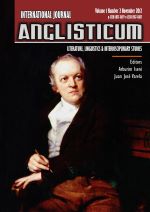SIR PAUL NURSE’S GENETICIST’S TALES - CASE STUDY OF A COMPLEX FAMILY TREE NARRATIVE
DOI:
https://doi.org/10.58885/ijllis.v14i3.11mmbKeywords:
genetics, identity , folktale motifs, anagnorisis, illegitimacy, autobiographical narrative, ATU 926Abstract
This study examines the autobiographical narrative of the Nobel Prize-winning geneticist Sir Paul Nurse, to explore the intersection of genetics, identity, and familial secrecy. Employing a structuralist-folkloric framework rooted in Vladimir Propp’s morphology and the Aarne-Thompson-Uther classification, alongside psychoanalytic theories from Carl Jung and Julia Kristeva, the analysis traces Nurse’s journey from perceived familial difference to the revelation of his illegitimacy and concealed maternity. The narrative parallels folktale motifs, such as ATU 926 ("Judgment of Solomon") and ATU 930B ("The Predestined Wife"), while engaging themes of recognition (Aristotle’s anagnorisis), revolt (Kristeva’s self-authorship), and ethical ambiguity (Žižek’s traumatic Real). The findings highlight how personal mythmaking reconciles scientific rationality with archetypal narratives, offering a model for identity reconstruction in empirical paradigms.
References
Aristotle. (1996). Poetics (M. Heath, Trans.). Penguin Classics. (Original work published ca. 335 BCE)
Bruner, J. (1991). The narrative construction of reality. Critical Inquiry, 18(1), 1–21. https://doi.org/10.1086/448619
Campbell, J. (2008). The hero with a thousand faces (3rd ed.). New World Library. (Original work published 1949)
Dahlstrom, M. F. (2014). Using narratives and storytelling to communicate science with nonexpert audiences. Proceedings of the National Academy of Sciences, 111(Suppl 4), 13614–13620. https://doi.org/10.1073/pnas.1320645111
Estés, C. P. (1992). Women who run with the wolves: Myths and stories of the wild woman archetype. Ballantine Books.
Jung, C. G. (1951). The archetypes and the collective unconscious. Princeton University Press.
King, T. (2023, December 18). Sir Paul Nurse’s family secrets revealed through DNA [Audio podcast]. Professor Turi King Podcast. https://turiking.co.uk/
Kristeva, J. (2002). Revolt, she said (B. O’Keeffe, Trans.). Semiotext(e). (Original work published 2000)
Lejeune, P. (1975). Le pacte autobiographique. Seuil.
Lüthi, M. (1976). Once upon a time: On the nature of fairy tales. Indiana University Press.
Nelkin, D., & Lindee, M. S. (2004). The DNA mystique: The gene as a cultural icon (2nd ed.). University of Michigan Press.
Nobel Prize Outreach AB. (2001). Sir Paul Nurse - Biographical. Retrieved July 10, 2025, from https://www.nobelprize.org/prizes/medicine/2001/nurse/biographical/
Nobel Prize Outreach AB. (2008, December 19). Sir Paul Nurse - Facts. Retrieved July 10, 2025, from https://www.nobelprize.org/prizes/medicine/2001/nurse/facts/
Nurse, P. (2014, August 9). Paul Nurse: The birth certificate that said my mother wasn’t my mother. The Guardian. Retrieved July 10, 2025, from
https://www.theguardian.com/culture/2014/aug/09/paul-nurse-birth-certificate-not-mothers-name
Nurse, P. (2014, August 18). Discussing family trees in school can be dangerous [Video]. The Moth. Retrieved July 10, 2025, from https://www.youtube.com/watch?v=nhMFxqC89Ac
Nurse, P. (2015). Discussing family trees in school could be dangerous. In C. Burns (Ed.), The Moth: 50 true stories (pp. 191–196). Hyperion.
Propp, V. (1968). Morphology of the folktale (2nd ed., L. Scott, Trans.). University of Texas Press. (Original work published 1928)
The Moth. (n.d.). Paul Nurse. Retrieved July 10, 2025, from https://themoth.org/posts/storytellers/paul-nurse
Thompson, S. (1955–1958). Motif-index of folk-literature (Vols. 1–6). Indiana University Press.
Uther, H.-J. (2004). The types of international folktales: A classification and bibliography (Vols. 1–3). Suomalainen Tiedeakatemia. https://www.folklorefellows.fi/ffc-editors/recent-volumes/ffc-280-289/ffc-284-286/
Žižek, S. (2004). Organs without bodies: On Deleuze and consequences. Routledge.
Downloads
Published
How to Cite
Issue
Section
License
Copyright (c) 2025 Authors

This work is licensed under a Creative Commons Attribution 4.0 International License.
Declaration/Copyright transfer:
1. In consideration of the undertaking set out in paragraph 2, and upon acceptance by ANGLISTICUM for publication of the manuscript in the Journal, I/We hereby assign and transfer publication rights to ANGLISTICUM, whereas I/We retain the copyright for the manuscript. This assignment provides ANGLISTICUM the sole right and responsibility to publish the manuscript in its printed and online version, and/or in other media formats.
2. In consideration of this assignment, ANGLISTICUM hereby undertakes to prepare and publish the manuscript in the Journal, subject only to its right to refuse publication if there is a breach of the Author’s warranty in paragraph 4 or if there are other reasonable grounds.
3. Editors and the editorial board of ANGLISTICUM are empowered to make such editorial changes as may be necessary to make the Manuscript suitable for publication.
4. I/We hereby acknowledge that: (a) The manuscript submitted is an original work and that I/We participated in the work substantively and thus I/We hereby are prepared to take public responsibility for the work; (b) I/We hereby have seen and approved the manuscript as submitted and that the manuscript has not either been published, submitted or considered for publication elsewhere; (c) The text, illustration, and any other materials included in the manuscript do not infringe upon any existing copyright or other rights of anyone.
5. I/We hereby indemnify ANGLISTICUM and the respective Editors of the Journal as mentioned in paragraph 3, and hold them harmless from any loss, expense or damage occasioned by a claim or suit by a third party for copyright infringement, or any suit arising out of any breach of the foregoing warranties as a result of publication of the manuscript.





